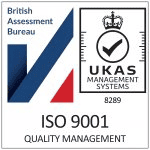

Following several high profile incidents and the recommendations of associated accident investigation reports, Network Rail has commissioned the design and production of a new stretcher bar system. The new system is designed to increase the integrity of points systems and to reduce the risk of stretcher bar failure and associated risk to rail traffic. This new stretcher bar design was due to be rolled out from late 2012 in a targeted.
The new stretcher bar system has been designed by Balfour Beatty Rail (BBR), in line with requirements specified by Network Rail. The system has been analysed by BBR via the Failure Modes and Effects Analysis (FMEA) methodology. Network Rail Reliability of Signalling Assets (RoSE) project has taken out an analysis of the new stretcher bar in line with RCM II requirements. This analysis considers the stretcher bar as part of the point system as a whole (i.e. integrated with point machines, supplementary drives and detection etc).
Network Rail has requested Vertex SE to carry out a high level verification and validation exercise on the processes carried out by Balfour Beatty and RoSE. The purpose of this analysis is to provide an independent validation that both Balfour Beatty and the RoSE project have carried out a proper and thorough analysis of the system, and to identify any gaps in methodology that may require further consideration before introduction of the new stretcher bar system.
Independent Safety Assessment of new rail products
Critical Analysis Technical Writing/ Report Provision
Project duration was from August 2012 till August 2013
Vertex utilised its team of Railway Systems and Safety Engineers and Project Managers for this project. Qualification held includes membership of the Institution of Railway Signalling Engineers, membership to the Association of Project Managers (MAMP), Project Management Professionals (PMP) and professional Chartership (C.Eng.).
One New Change,
Floor 2, London,
EC4M 9AF, United Kingdom
T: +44 (0)20 7688 2828
E: enquiries@vertex-se.com
285 Madison Avenue
Suite 2200, New York
NY 10017, USA
T: +1 212-370-7319
E: enquiries@vertex-se.com
One Wharf Lane
Level 19, 171 Sussex Street
NSW 2000, Australia
T: +61 (0) 2 9252 7623
E: enquiries@vertex-se.com
Vertex Systems Engineering is the trading name of AMCL Systems Engineering Ltd.
A Turner & Townsend Company. Registered in the UK, Number: 04440268
© Copyright 2024 Vertex Systems Engineering. All Rights Reserved.




| Cookie | Duration | Description |
|---|---|---|
| cookielawinfo-checkbox-advertisement | 1 year | Set by the GDPR Cookie Consent plugin, this cookie is used to record the user consent for the cookies in the "Advertisement" category . |
| cookielawinfo-checkbox-analytics | 11 months | This cookie is set by GDPR Cookie Consent plugin. The cookie is used to store the user consent for the cookies in the category "Analytics". |
| cookielawinfo-checkbox-functional | 11 months | The cookie is set by GDPR cookie consent to record the user consent for the cookies in the category "Functional". |
| cookielawinfo-checkbox-necessary | 11 months | This cookie is set by GDPR Cookie Consent plugin. The cookies is used to store the user consent for the cookies in the category "Necessary". |
| cookielawinfo-checkbox-others | 11 months | This cookie is set by GDPR Cookie Consent plugin. The cookie is used to store the user consent for the cookies in the category "Other. |
| cookielawinfo-checkbox-performance | 11 months | This cookie is set by GDPR Cookie Consent plugin. The cookie is used to store the user consent for the cookies in the category "Performance". |
| CookieLawInfoConsent | 1 year | Records the default button state of the corresponding category & the status of CCPA. It works only in coordination with the primary cookie. |
| elementor | never | This cookie is used by the website's WordPress theme. It allows the website owner to implement or change the website's content in real-time. |
| viewed_cookie_policy | 11 months | The cookie is set by the GDPR Cookie Consent plugin and is used to store whether or not user has consented to the use of cookies. It does not store any personal data. |
| Cookie | Duration | Description |
|---|---|---|
| _ga | 2 years | The _ga cookie, installed by Google Analytics, calculates visitor, session and campaign data and also keeps track of site usage for the site's analytics report. The cookie stores information anonymously and assigns a randomly generated number to recognize unique visitors. |
| _ga_W5K5QG9YQK | 2 years | This cookie is installed by Google Analytics. |